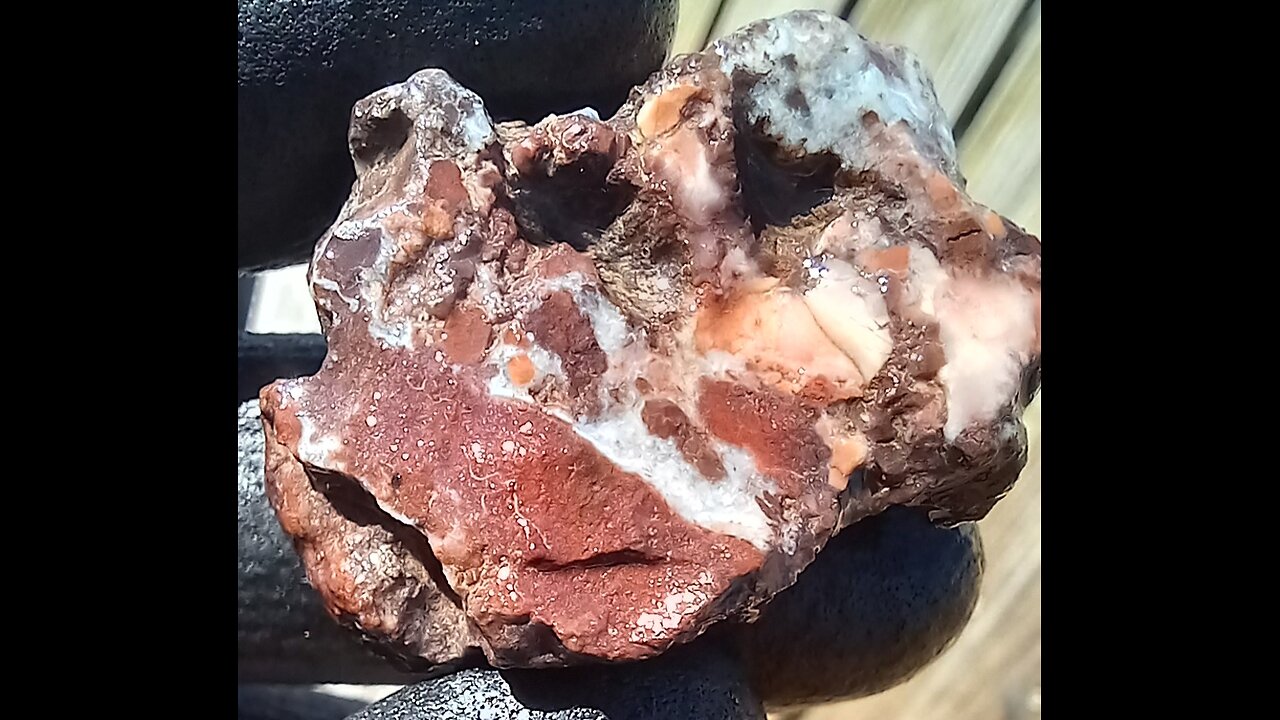Premium Only Content

Lil' bit of opal!
Opal is a hydrated amorphous form of silica, with a water content typically between 3 and 21% by weight, most commonly around 6-10%. It's deposited at relatively low temperatures and can be found in the fissures of various rock types, including limonite, sandstone, rhyolite, marl, and basalt. Here's a deeper look into opal:
Types of Opal:
Precious Opal: Known for its "play-of-color," which is an optical phenomenon where colors flash or change as the angle of light or observation changes. This effect is due to the diffraction of light through the microscopic silica spheres within the opal.
Common Opal: Lacks the play-of-color and can come in a variety of colors like white, black, grey, yellow, orange, red, or brown. It's often referred to as "potch" when not gem-quality.
Fire Opal: Typically ranges in color from yellow to orange to red and can be transparent to translucent. Fire opals can exhibit play-of-color, but their name comes from the fiery body color.
Boulder Opal: A type of opal naturally attached to its host rock. It's often cut with the host rock to provide stability and to enhance the visual appeal.
Matrix Opal: The opal fills the cracks and cavities within the host rock, creating a network of opal that's visible on the surface.
Formation:
Primary Opal: Forms through the slow deposition of silica from groundwater in cavities or fractures of rocks.
Secondary Opal: Can form by weathering or alteration of other minerals, often in more superficial environments or through the action of silica-rich waters.
Locations:
Australia: The world's leading source, especially for precious opal, with significant deposits in places like Coober Pedy, Lightning Ridge, and White Cliffs.
Ethiopia: Known for its black opals and more recently discovered opal fields.
Mexico: Famous for fire opals.
Brazil: Produces a variety of opals, including crystal opal.
Properties:
Hardness: Typically ranges between 5.5 to 6.5 on the Mohs scale, though it can be softer if less hydrated or harder if more silica-rich.
Luster: Can range from waxy to resinous to vitreous.
Transparency: Varies from opaque to semi-translucent to transparent.
-
 2:21:06
2:21:06
TheSaltyCracker
2 hours agoTrump Crosses Dem Red Line ReeEEEStream 05-21-25
66.2K123 -
 LIVE
LIVE
JdaDelete
3 hours ago $0.15 earnedBanjo-Kazooie | wedNESday | Part 3
258 watching -
 1:40:56
1:40:56
Glenn Greenwald
5 hours agoJD Vance: Does SCOTUS Have the Power to Reject the Majority's Will?; The Lingering Epstein Question: Did he Work with Foreign Intel Agencies?; Key Zelensky Opponent Murdered in Spain; And More | SYSTEM UPDATE #458
163K62 -
 LIVE
LIVE
Barry Cunningham
5 hours agoPRESIDENTIAL BEATDOWN UPDATE! | BIDEN TREASON NEWS | DEMS AND MEDIA IN DOOM SPIRAL!
9,965 watching -
 1:25:53
1:25:53
Sarah Westall
3 hours agoWolf of Wallstreet Targets Conservative Circles - Orchestrated IRA Gold Scams w/ Dale Whitaker
19.6K2 -
 16:33
16:33
From The Desk Of Anthony Pompliano
4 hours ago $4.75 earnedWhat I Got Wrong About The Trump Administration
41.5K7 -
 1:41:07
1:41:07
The Mike Schwartz Show
5 hours agoTHE MIKE SCHWARTZ SHOW with DR. MICHAEL J SCHWARTZ
23.8K3 -
 7:03:57
7:03:57
ZWOGs
8 hours ago🔴LIVE IN 1440p! - Star Wars Jedi: Fallen Order | DAY 3 | Then Fortnite Practice! - Come Hang Out!
5.17K -
 1:02:26
1:02:26
BonginoReport
5 hours agoWas Biden’s Drug Addicted Son His Chief Decision Maker?! - Nightly Scroll w/ Hayley Caronia (Ep.53)
143K109 -
 54:53
54:53
LFA TV
10 hours agoJim Comey Calls for Donald Trump’s Assassination | TRUMPET DAILY 5.21.25 7PM
28.2K5